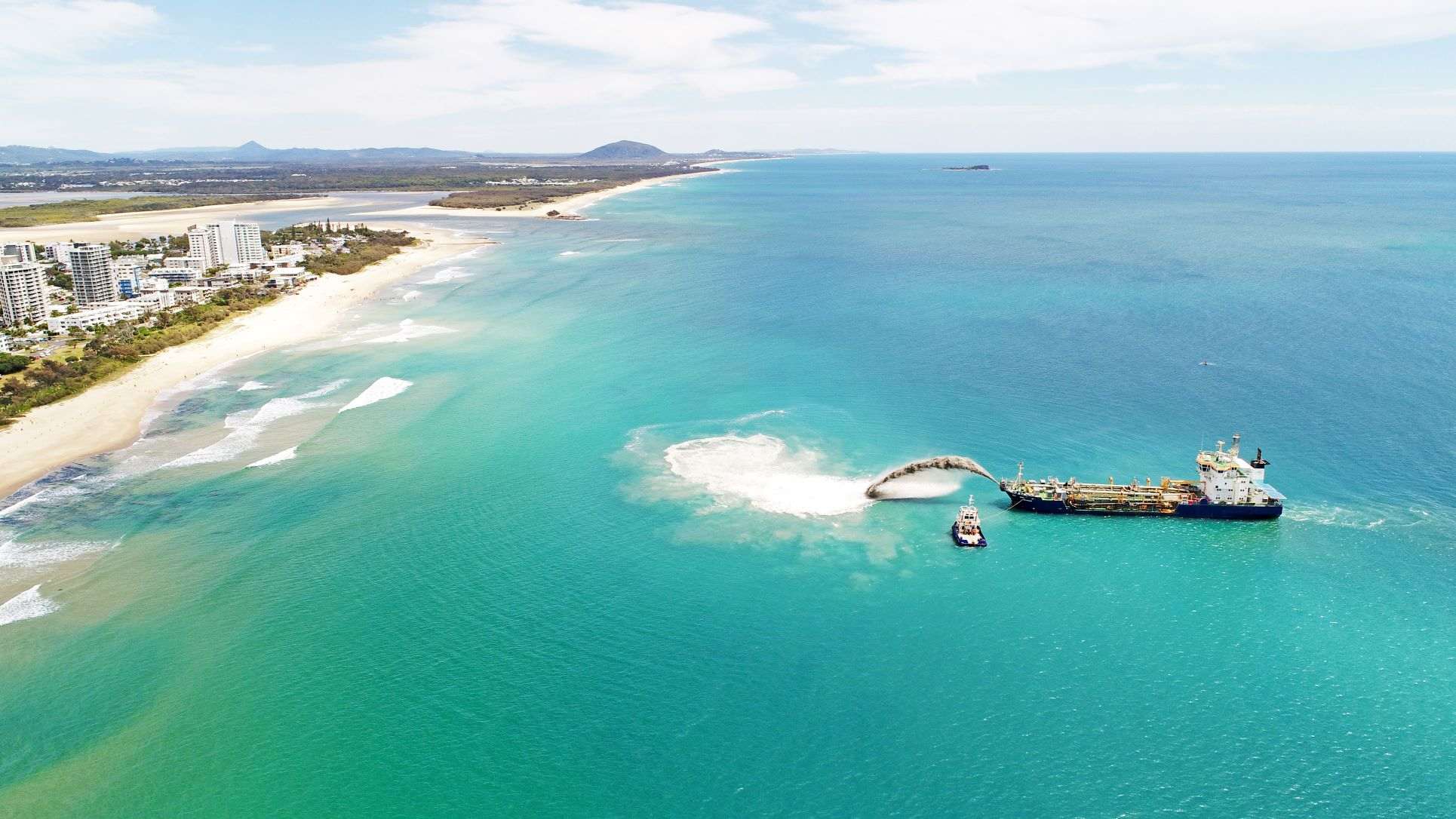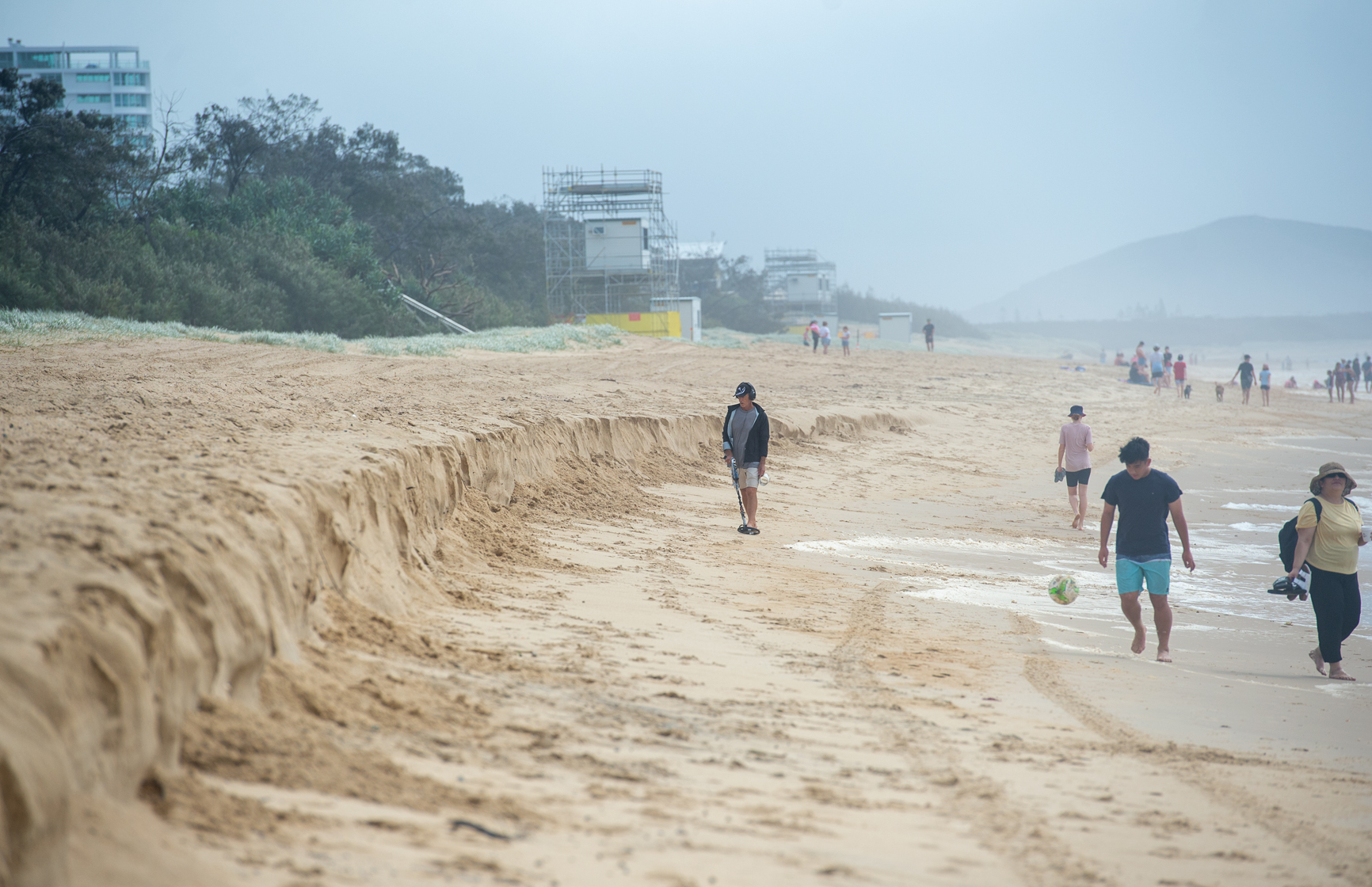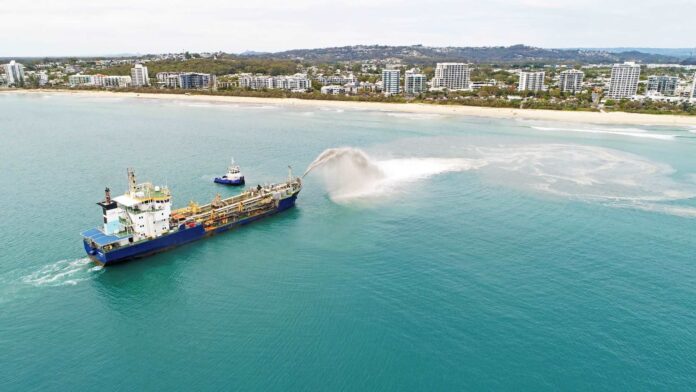There’s an unusual rainbow that can be seen off the coast, thanks to a special trial aimed at replenishing a popular beach.
Dredging vessel TSHD Brisbane is spraying sand, sourced from Moreton Bay, into an area about 300m off the Maroochydore shoreline.
The volume of sand being transported, in multiple loads, is 40,000m3, equal to about 4000 10m tipper truck loads.
The replenishment is part of the Maroochydore Beach Nearshore Nourishment trial, which started this week and continues until November 24.
The sand is distributed by “rainbowing” and by bottom placement. Rainbowing is the term used when sand is mixed with water and sprayed from the ship’s bow in a huge arc, like a rainbow.
Bottom placement is when sand is released from the bottom of the hull in a grid like pattern.
Do you have an opinion to share? Submit a Letter to the Editor with your name and suburb at Sunshine Coast News via: news@sunshinecoastnews.com.au
Sunshine Coast Council’s Environment Portfolio Councillor Peter Cox said community safety was council’s top priority during the trial.
“Strict safety measures will be in place on the beach and in the water for our community’s safety – and the support vessel Mildred, as well as lifeguards on jet skis, will help with those measures by keeping the water clear before, during and after the dredge operates,” he said.
“It takes roughly 7.5 hours for the barge to travel to Moreton Bay and back again, and over the course of the week it will make the trip 21 times, weather dependent, and be working 24 hours a day.
“Please follow lifeguard instructions and stay clear of the area the dredge operates in before it arrives, during the placement and after it has left.”

An exclusion zone is in place in the water and on the beach to keep people safe, and so the dredge can do its job.
The exclusion zone will be in force after the dredge has left, so the water can settle and be safe for water users.
Shark nets within the exclusion zone have been temporarily relocated 80m from their original location, while the works are being conducted.
Council’s Principal Coastal Engineer Georgia Keeshan said the volume of sand “is a small amount compared to most beach nourishment operations”.
“It’s been kept low on purpose to be able to evaluate if we are achieving our goals,” she said.
“We aim to understand if the science is correct and if the technique is viable for placing larger quantities of sand in the future if needed, if there’s anything we’d need to change from an operational perspective, and our community’s views on the technique.
“After the nourishment operations have finished, we will monitor the impacts on marine plants and the reef with divers, the sand movement over time with hydrographic surveys and cameras, the impacts to surf amenity through the University of the Sunshine Coast, and community sentiment on the technique.
“We will share the outcomes of the trial when results become available.”

Cr Cox said the best views of the dredge in action are from in front of the Alex Skate Park, outside the exclusion zone.
“Rainbowing will be the most interesting technique visually,” he said.
“We expect the dredge to rainbow sand first up in the morning, between 6am to 9am, when the wind is low – and this is all weather dependent.
“During the other trips it will be releasing the sand from its hull, which you won’t be able to see.
“The dredge will place the sand about 300m off the beach and then nature should put it back onto the beach.
“I encourage the community to let us know their views on the trial at Have Your Say – Sunshine Coast Council.”
SUBSCRIBE here now for our FREE news feed, direct to your inbox daily!





